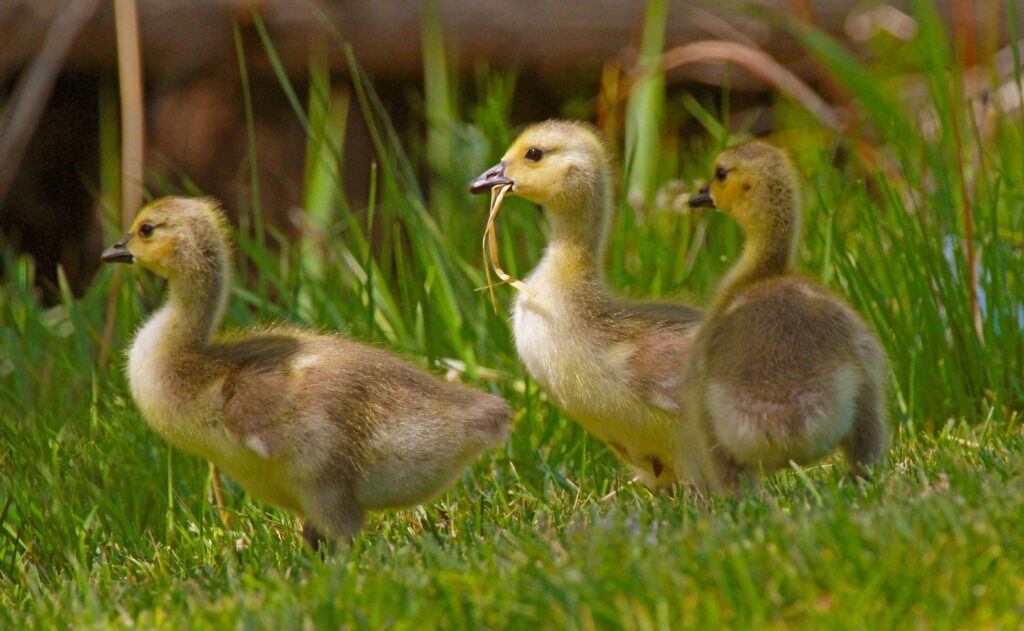Goslings are some of the many baby birds that can be found near roads and highways this time of year.
SALT LAKE CITY — The Utah Division of Wildlife Resources recognizes that this is time year bird eggs are hatching, and some hatchlings may fall out of a nest to the ground.

It is not unusual to see a string of baby ducks or goslings at the edge of a road or highway. Drivers should be careful to watch and stop for the birds as they cross the road.
Some young birds leave their nests before they can fly and others may be blown out of nests during high winds and spring thunderstorms.
“They usually chirp and call from the nest, waiting for their parents to bring food to them,” Blair Stringham, DWR migratory game bird program coordinator, said. “Sometimes, that results in them falling from their perch.”
Robins which nest in trees seem to be the most common stray baby birds followed by swallows that build their mud nests on the side of houses.
DWR officials said if someone finds a baby bird on the ground, there are options to consider:
Put it back in the nest if it doesn’t have feathers
If the bird is very small and still featherless, people should place it back in its nest. If a person can’t find or reach the nest, put the bird on a branch safely out of reach of dogs and cats.
“The baby will squawk, and its parents will find it,” Stringham said.
Birds that have fallen out of the nest should never be taken home. Most birds are protected by state and federal laws, and it is against the law in Utah to possess wild animals without special permits.
Don’t feed the bird
DWR also discourages trying to feed wild birds. Birds have a very specific diet and feeding them something that’s not part of their diet can kill them.
“While robins and some bird species can safely eat worms, others can’t,” Stringham said. “So, don’t try to feed baby birds or other wildlife that you may see. You may think you are ‘helping’ them, but it usually does more harm than good.”
Put the bird back on its branch or in its nest, and let its parents feed it.
Leave it alone if it has feathers
Young birds are called fledglings. They have most of their flight feathers and are very close to taking their first flight.
It is recommended if the bird isn’t in danger, leave it where you found it. This awkward “hopping” stage typically lasts two to five days. It’s part of the natural process a baby bird goes through before taking its first flight. Its parents are watching the baby bird and are still feeding it.
If the fledgling is in immediate danger, then move it carefully to a safer spot nearby. However, if you can’t catch the bird, just leave it be.
Additional information about how to help baby birds is also available on the Wild Aware Utah website.
Don’t bother or move bird nests that have eggs or baby birds in them
It’s unlawful to disturb nests that have eggs or baby birds, and you can be cited for doing so.
Preventing birds from nesting is okay it just needs to be done before nesting season begins. Homeowners must wait until after the baby birds have left the nest before removing it to prevent future nesting.

What to do with baby ducks
Leave ducklings alone on the ground even if it looks like they have been separated from their parents, don’t move them, or try to put them in water. If baby ducks are trapped in a storm drain or somewhere else dangerous – like in a swimming pool – then contact a city official or contact the nearest DWR office.

